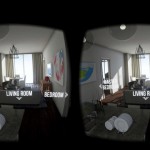How A Mouse Can Sniff Out unhealthy internet Design
Brigham younger college professor Jeffrey Jenkins says analyzing cursor movements can observe how an individual feels about a site.
December sixteen, 2015
firms can pump millions into a web site’s design, implementing the splashiest pics and reputedly intuitive knowledge structure. but that doesn’t guarantee users will like the website online. Brigham young college professor Jeffrey Jenkins argues that taking note of how customers move their mouse while on a webpage reveals sure or terrible associations with the web page and could lead to higher net design.
In MIS Quarterly, a peer-reviewed knowledge techniques journal, Jenkins and his analysis partners Martin Hibbeln, Christoph Schneider, Markus Weinmann, and Joseph S. Valacich, printed the implications of three research which conclude that erratic, imprecise cursor movements sign that a person is feeling annoyed, offended, perplexed, and/or unhappy. In other phrases, they are having an terrible experience.

Drawing on consideration keep an eye on theory—which argues that terrible emotion decreases folks’s means to keep watch over their consideration—Jenkins aimed to respond to two questions: Does negative emotion influence mouse cursor distance and velocity and may the monitoring and diagnosis of mouse cursor distance and pace be used to deduce bad emotion?
“traditionally it has been very tough to pinpoint when a user becomes annoyed, major them to no longer come back to a website online,” Jenkins says in a news release. “having the ability to experience a terrible emotional response, we are able to regulate the web page expertise to get rid of stress or to supply lend a hand.”
In certainly one of three studies testing his speculation—that terrible emotion will increase the distance a cursor travels and reduce the cursor speed—Jenkins and his fellow researchers asked their subjects to complete tasks on-line, like buying something from a mock e-commerce website online. The researchers then manipulated certain points within the interaction to elicit a response. as an example, creating error messages and slowing download times. some other learn about concerned finishing up a host-ordering job on Amazon’s crowdsourcing market Mechanical Turk. The remaining one involved attempting to use a web based customization instrument. later on, the subjects indicated how they felt at certain points throughout the test the usage of a SAM scale.
Researchers have experimented with other metrics to verify how users respond to a web page—like eyetracking research. They hope is that quantifying how customers have interaction with a web site and the place the pain factors are will better inform interface design.
“the usage of this know-how, websites will now not be dumb,” Jenkins says. “websites can go beyond just imparting information, but they are able to experience you. they may be able to be aware no longer just what you are offering, however what you’re feeling.”
[by way of Phys.org]
[Mouse: bigjom jom by way of Shutterstock. Geocities Pages: oneterabyteofkilobyteage.tumblr.com]
quick company , read Full Story
(20)













